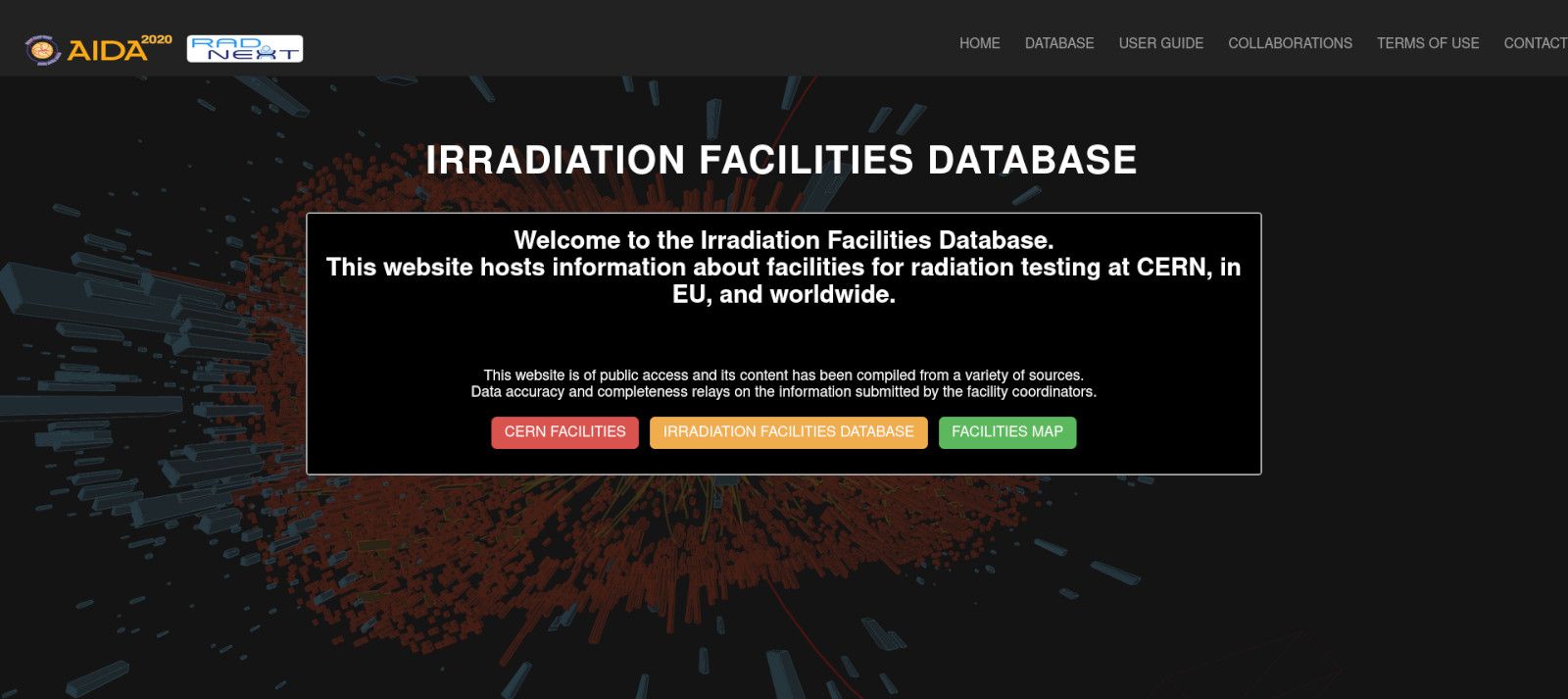Discover the CERN Irradiation Facilities Database
Pierre Pelissou

Screenshot of the CERN irradiation facilities database landing page (https://irradiation-facilities.web.cern.ch).
In the framework of the EU-funded AIDA-2020 project, the CERN irradiation facilities database (https://irradiation-facilities.web.cern.ch) was created in 2017 to list in a convenient and user-friendly way the key characteristics of worldwide irradiation facilities. The infrastructures listed in this database are the one of interest to the large High Energy Physics (HEP) community for testing particle detectors prototypes, qualifying electronics components & systems, as well as for characterizing the radiation hardness of materials.
Through the website, users can find a list of useful information ranging from contact persons, available types of beams or radiation fields (photons, electrons, heavy ions, protons, neutrons, and laser-driven beams, etc.) to accessibility, logistic or safety. The CERN database currently comprises 228 facilities. Furthermore, some technical parameters essential for radiation testing are also available as well as details about the test campaign’s preparation, the facility availability and access modalities.
Within RADNEXT Work Package 4 (“Roadmap and pre-design of future irradiation facilities”), one task focuses on updating, extending, and maintaining the wide range of facility data of this CERN database. The current database can be considered as the focal point between users and facilities and intends to pave the way to bring closer industry and research. Thus, the diffusion and promotion of this tool aims to support the development and evolution of the radiation effect community’s needs.
Moreover, within RADNEXT Work Package 3 (“Transnational access management and harmonization”), the Irradiation Facilities database is used as a basis for the development of the RADNEXT Transnational Access (TA) portal. This portal is used for the submission, review, and follow-up of RADNEXT Transnational access experiment proposals as well as for the assignment of a RADNEXT facility and beam time to the accepted ones.
Within the same Work Package 3 research activities are ongoing, aiming to use state-of-the-art Natural Language Processing and machine learning techniques for providing support in TA proposals assessment and evaluation. With the support of Open Science approach and Open Peer Review data, the intention is to provide a transparent and impartial process and ensure innovation and high-quality of accepted experiments. A PhD thesis “Automatic assessment of High-Energy Physics irradiation experiments” is a part of these endeavours.